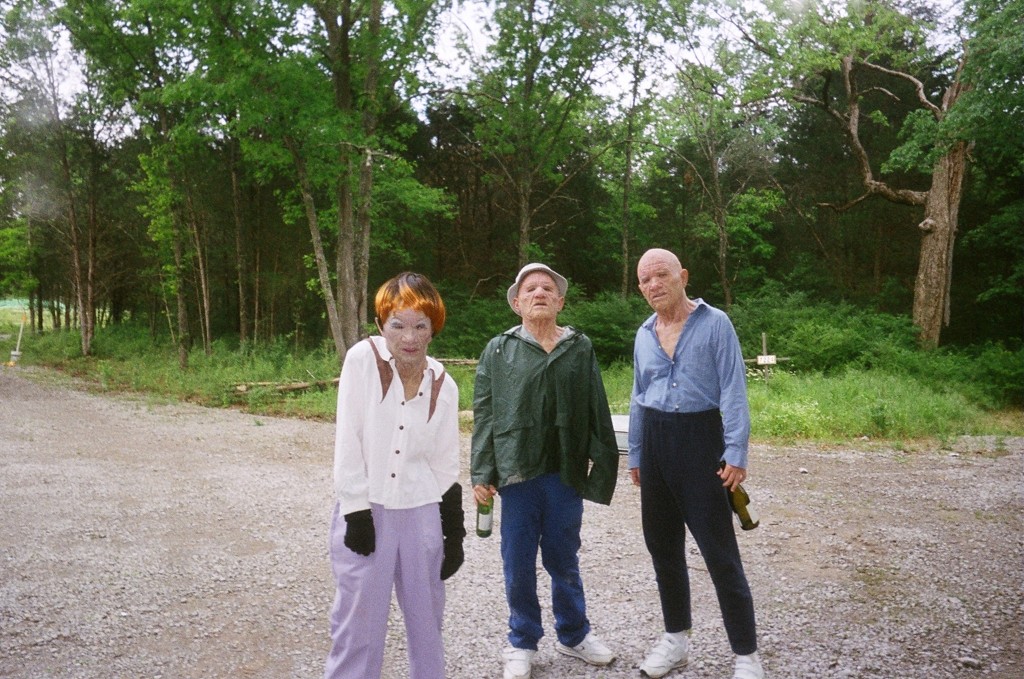Trash Humpers Review
 Harmony Korine has described Trash Humpers not as a film but something you might find in a ditch, with blood on, perhaps in a zip lock bag. Korine is right, this is not his new film, it is a fictionalised artefact of twisted Americana, a VHS document of a very strange collection of people doing very strange things.
Harmony Korine has described Trash Humpers not as a film but something you might find in a ditch, with blood on, perhaps in a zip lock bag. Korine is right, this is not his new film, it is a fictionalised artefact of twisted Americana, a VHS document of a very strange collection of people doing very strange things.
In a Q&A after the LFF screening of Trash Humpers Korine described a time in his childhood when his neighbours would dump their old VHS tapes in his trash, which he would recover and watch and although the labels might say ‘Pee-Wees’s Big Adventure’, the tape would actually be a home-made porno of his neighbours having sex. Clearly inspired by this event Korine has made his own video to be found in the trash by an impressionable young mind. The difference of course being that Trash Humpers is fictional and allows Korine to take the strangeness of this concept to twisted new heights.
The film is shot entirely on VHS, on what would appear to be a very dilapidated VHS camera. Included in the film are scenes obscured by bad tracking, distortion and general video noise. The resulting effect of all the issues with the format only add to a feeling of authenticity in the film and strangely for me, like Korine a child of the VHS generation, a strange sense of nostalgia.
The title is literal, the main characters do actually hump trash, and Korine has been perplexed by walkouts at festival screenings. But even in recent cinema it is hard to think of a film so strange and unique as Trash Humpers. The film focuses on four main characters and the variety of equally odd periphery characters that surround them. The main four are three men and a woman, one being Korine himself, although he remains mostly behind the camera. The characters are supposed to be in their nineties and the actors where latex masks to give this effect. I was actually surprised when Korine pointed this out as whilst watching the film I thought the main characters were wearing latex masks as part of their strange perversion as the masks are very unconvincing. I actually think the film works in this way a little better as the verite style is undermined slightly if you are supposed to accept that these are actually ninety year olds. The film is made up of a series of scenes involving these characters in which they are seen having sex with trash, fellating trees, smashing up televisions, invading homes, setting off fireworks, hanging out with overweight semi naked prostitutes and eventually even killing people.
The main characters are very disturbing and many scenes are uncomfortable to watch, often even irritating, but in many cases also hilarious. Narrated by the twisted cackling laughter of the cameraman, Korine’s character, who often shouts out phrases such as “Make it, make it, don’t take it” until they become ingrained in your mind, the audience is complicit in the mayhem and twisted anarchy that the four engage in. It is in the scenes in which we see dead bodies that the audience is left feeling much more uncomfortable as the laughter dies down and the insanity on screen almost feels real. It is perhaps ironic though that these are the most unreal scenes presented. To film Trash Humpers the cast and crew allegedly spent two weeks sleeping on the streets, and under bridges, spending a lot of time in character and reacting to situations and improvising rather than following a script.
The result feels strangely authentic despite the many contrivances. I would quite believe that the child who cackles maniacally whilst hitting a doll in the head with a hammer was probably not given directions and much like the characters in Lars Von Trier’s Idiots, the ‘actors’ in Trash Humpers seem somewhat liberated in their play-acting. The result, therefore, is much more akin to Gummo than Korine’s last film, the almost straightforward Mister Lonely, and this return to his roots as a filmmaker is an exciting one and one that has yielded very interesting work.
Trash Humpers also has elements of vaudeville and all the characters perform set pieces to the camera, whether it is the tap-dancing in the car park, the poetry recital, the appalling stand up or the many songs that provide a strange soundtrack to the film. In his use of these performance pieces Korine has made a film that again showcases the strange and beautiful underbelly of America. The film ends by returning to a recurring motif of babies with a scene that is both beautiful and disturbing. When the laughter dies down one realises how powerful the folk cinema of Harmony Korine can actually be.